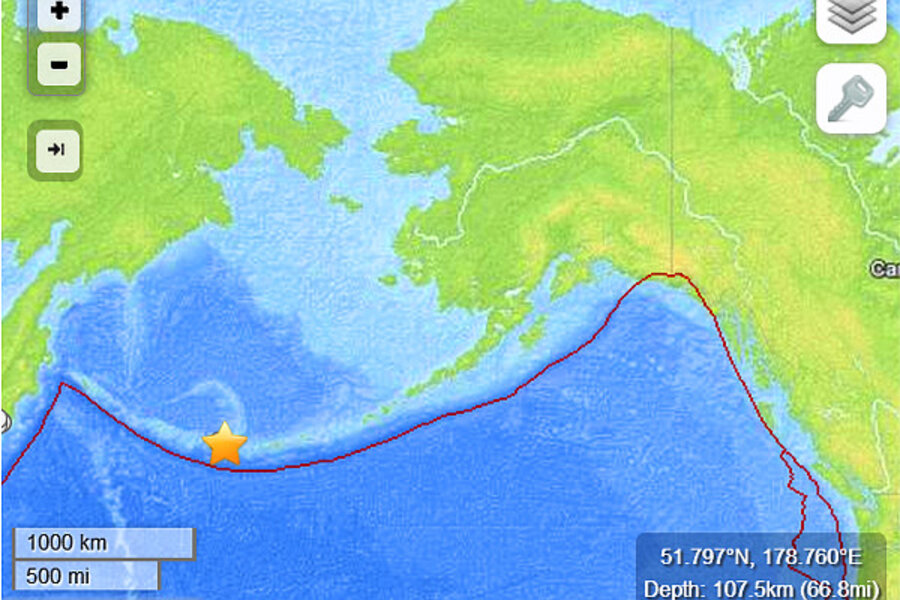Alaska earthquake 'rings the Earth like a bell'
| JUNEAU, Alaska
A magnitude 7.9 earthquake struck deep under the ocean floor near Alaska's Aleutian Islands, triggering shaking felt over vast distances and setting off a small tsunami, the National Tsunami Warning Center said.
A tsunami warning, later downgraded to an advisory, prompted the evacuation of about 200 residents of the town of Adak to higher ground, city manager Layton Lockett said.
There were no immediate reports of injuries or damage from the quake, which was initially measured at a magnitude of 8.0 but later downgraded.
The quake was so large and deep that it triggered dozens of aftershocks within an hour and prompted enough shaking to be picked up by seismometers around the world over the next 24 hours, said Mike West, a seismologist who serves as director of the Alaska Earthquake Center.
A tsunami wave of roughly 7.5 inches was measured at Amchitka Island, in the Aleutian Islands chain, and lesser heights were recorded at other islands, said National Tsunami Warning Center oceanographer Bo Bahng.
"When you've got an earthquake that big, it rings the Earth like a bell," West said.
Lockett said he and his staff were in their offices when the earthquake struck.
"Oh, we felt it," he said. "We felt it in length, in duration and in intensity. We were sitting there for about 20 seconds, then we went outside and it kept going and going and going."
The tsunami warning covered coastal areas from Nikolski to Attu at the western end of the Aleutian island chain.
The US National Oceanic and Atmospheric Administration initially warned of widespread, dangerous coastal flooding and powerful currents in the region for hours in the event of a tsunami. The warning was downgraded about two hours after the earthquake hit.
The quake struck shortly before 1 p.m. (local time) on Monday, about 14 miles southeast of Little Sitkin Island, Alaska, at a depth of about 71 miles, the USGS said.
Tsunamis are waves resulting from undersea quakes that can measure several yards high and can overwhelm coastal areas, NOAA said. It takes a large quake, with a magnitude 7.0 or higher, to produce a tsunami, the center said.
In 2004, a tsunami produced by a magnitude 9.3 undersea earthquake struck near Indonesia and 240,000 people were killed, the center noted.
(Reporting by Steve Quinn; Additional reporting by Eric Beech in Washington; Writing by Sharon Bernstein and Eric M. Johnson; Editing by Jim Loney, Will Dunham and Tom Heneghan)





